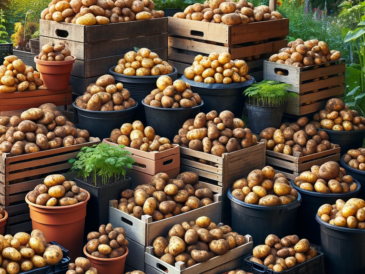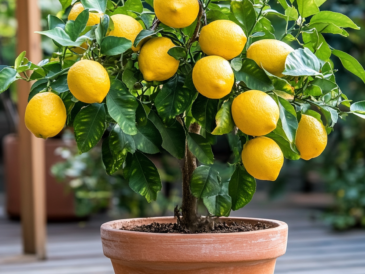Here are 25 plants that can thrive under trees along with a brief description of each, along with instructions on how to plant and care for them:
Hostas (Hosta spp.)
Known for their lush foliage, hostas are shade-loving perennials that add texture and color to the garden. Plant them in well-draining soil enriched with organic matter, and water regularly to keep the soil evenly moist.
Lungwort (Pulmonaria spp.)
Lungwort is a shade-tolerant perennial with colorful foliage and clusters of delicate flowers. Plant in moist, well-drained soil and provide occasional watering during dry spells.
Bleeding Heart (Dicentra spectabilis):
This classic woodland plant features heart-shaped flowers dangling from arching stems. Plant in rich, moist soil and provide regular watering to keep the soil consistently moist.
Astilbe (Astilbe spp.):
Astilbes are prized for their feathery plumes of flowers and fern-like foliage. Plant in moist, well-drained soil and provide regular watering, especially during periods of drought.
Ferns (Various species):
Ferns are versatile shade-loving plants that come in a variety of shapes and sizes. Plant in humus-rich, well-drained soil and keep the soil consistently moist, but not waterlogged.
Coral Bells (Heuchera spp.):
With their colorful foliage and delicate flowers, coral bells add interest to shady areas. Plant in well-drained soil amended with organic matter, and water regularly to keep the soil evenly moist.
Hellebores (Helleborus spp.):
Also known as Lenten roses, hellebores produce elegant, nodding flowers in late winter to early spring. Plant in fertile, well-drained soil and water regularly during dry spells.
Trillium (Trillium spp.):
Trilliums are woodland perennials prized for their elegant, three-petaled flowers. Plant in moist, well-drained soil and provide regular watering, especially during hot, dry weather.
Lily of the Valley (Convallaria majalis):
This fragrant ground cover produces dainty white flowers in spring and spreads readily in shaded areas. Plant in moist, well-drained soil and water regularly to keep the soil consistently moist.
Japanese Painted Fern (Athyrium niponicum):
With its striking silver-gray foliage, Japanese painted fern adds a touch of elegance to shady gardens. Plant in humus-rich, well-drained soil and water regularly to keep the soil evenly moist.
Foamflower (Tiarella spp.):
Foamflowers are shade-loving perennials that produce airy clusters of white or pink flowers. Plant in moist, well-drained soil and water regularly, especially during dry spells.
Barrenwort (Epimedium spp.):
Barrenworts are low-growing perennials prized for their delicate flowers and colorful foliage. Plant in well-drained soil and water regularly to keep the soil consistently moist.
Virginia Bluebells (Mertensia virginica)
These spring-blooming perennials produce clusters of nodding, bell-shaped flowers in shades of pink, purple, or blue. Plant in rich, moist soil and water regularly, especially during dry spells.
Bugleweed (Ajuga reptans):
Bugleweed is a fast-spreading ground cover that produces spikes of blue, purple, or white flowers in spring. Plant in moist, well-drained soil and water regularly to keep the soil consistently moist.
Sweet Woodruff (Galium odoratum):
This low-growing ground cover produces clusters of fragrant white flowers in spring. Plant in moist, well-drained soil and water regularly to keep the soil evenly moist.
Solomon’s Seal (Polygonatum spp.)
Solomon’s Seal is a shade-loving perennial with arching stems and dangling, bell-shaped flowers. Plant in rich, moist soil and water regularly to keep the soil consistently moist.
Japanese Forest Grass (Hakonechloa macra):
With its cascading foliage, Japanese forest grass adds texture and movement to shaded areas. Plant in moist, well-drained soil and water regularly to keep the soil evenly moist.
Jack-in-the-Pulpit (Arisaema triphyllum):
This unique woodland plant produces hooded flowers that resemble a preacher in a pulpit. Plant in rich, moist soil and water regularly, especially during hot, dry weather.
Toad Lily (Tricyrtis spp.):
Toad lilies are shade-loving perennials that produce clusters of exotic, orchid-like flowers in late summer to early fall. Plant in moist, well-drained soil and water regularly to keep the soil consistently moist.
Columbine (Aquilegia spp.):
Columbines are delicate perennials with unique, spurred flowers in shades of blue, purple, pink, or white. Plant in moist, well-drained soil and water regularly, especially during dry spells.
Fuchsia (Fuchsia spp.):
Fuchsias are shade-loving flowering plants prized for their elegant, pendulous flowers in shades of pink, purple, or white. Plant in rich, moist soil and provide regular watering to keep the soil consistently moist.
Brunnera (Brunnera macrophylla):
Brunneras are shade-loving perennials with heart-shaped leaves and clusters of tiny blue flowers in spring. Plant in moist, well-drained soil and water regularly to keep the soil evenly moist.
Bishop’s Hat (Epimedium x versicolor):
Also known as barrenwort, bishop’s hat is a low-maintenance ground cover with heart-shaped leaves and delicate flowers. Plant in well-drained soil and water regularly, especially during dry spells.
Jacob’s Ladder (Polemonium spp.):
Jacob’s ladder is a shade-loving perennial with clusters of blue, purple, or white flowers and finely divided foliage. Plant in moist, well-drained soil and water regularly to keep the soil consistently moist.
Bellflower (Campanula spp.):
Bellflowers are versatile perennials that produce charming bell-shaped flowers in shades of blue, purple, pink, or white. Plant in moist, well-drained soil and water regularly, especially during dry spells.
Planting and caring for these plants under trees:
- Preparation: Clear away any debris and gently loosen the soil in the planting area. Add compost or organic matter to improve soil structure and fertility.
- Planting: Dig a hole slightly larger than the plant’s root ball and place the plant in the hole. Backfill with soil and gently firm it around the plant’s roots. Water thoroughly after planting to settle the soil.
- Watering: Keep the soil consistently moist but not waterlogged, especially during the plant’s establishment period. Water deeply at the base of the plants to encourage deep root growth.
- Mulching: Apply a layer of mulch around the base of the plants to help retain soil moisture, suppress weeds, and regulate soil temperature. Leave a small gap between the mulch and the plant stems to prevent rot



